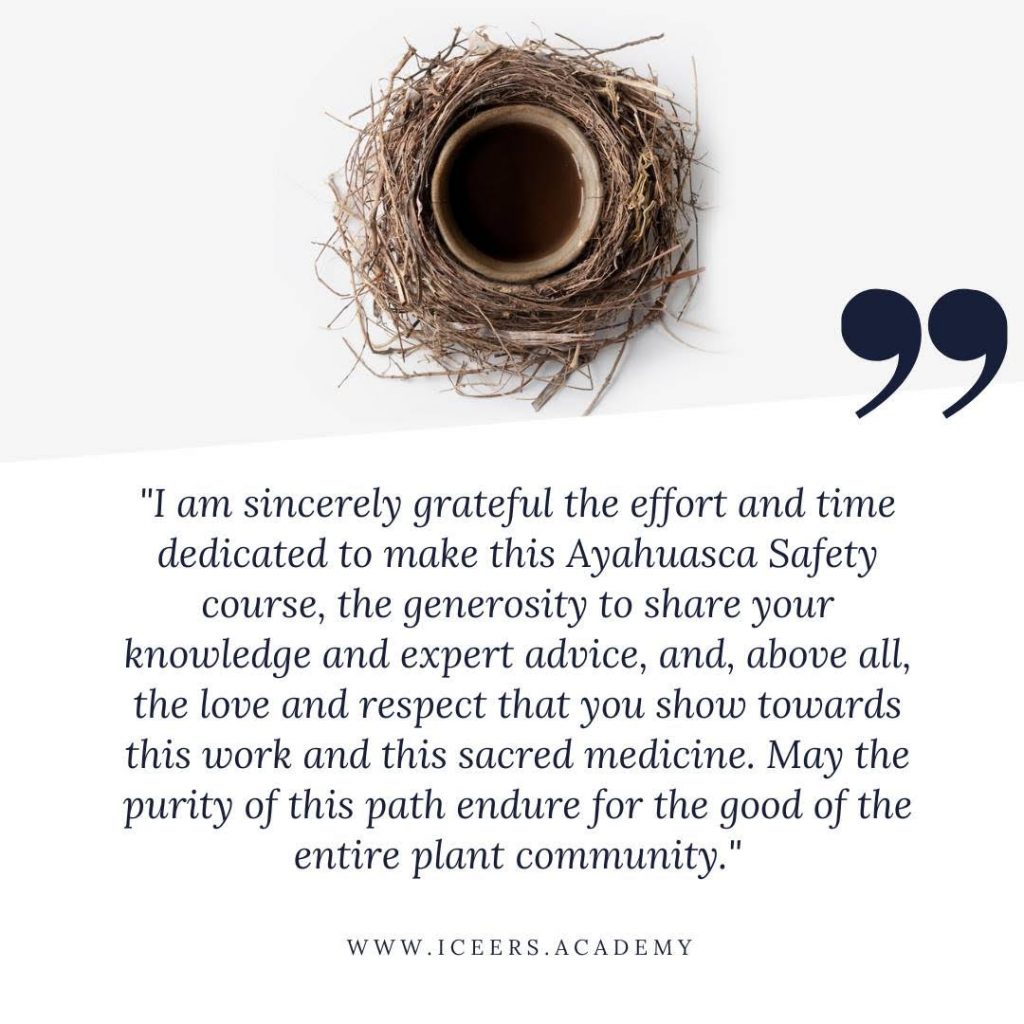Next May 7th will start the second edition of the course ‘Increasing safety in ayahuasca sessions’, a pioneering training offered by ICEERS for guides and facilitators of ayahuasca work in non-native environments to learn the best practices around ayahuasca to reduce risks and increase benefits during the sessions, will begin.
The course lasts six months (May to December) and its format is mixed: one hour a week of video and live dialogue every two weeks to chat and ask questions to the instructors, namely David Londoño, José Carlos Bouso, Constanza Sánchez Avilés, Marc Aixalà and Jerónimo Mazarrasa, all members of the NGO based in Barcelona and its Support Center, which has completed ten years attending “hundreds of cases” of people who have suffered some kind of mishap during or after the ingestion of ayahuasca.
The ‘know-how’ accumulated over these years, as well as the workshops conducted with numerous ayahuasca facilitators in recent years have served to cement the content of the course: “After organizing multiple workshops with hundreds of guides and facilitators of ayahuasca work in Spain, and the conclusion we have reached from ICEERS is that, although there is a very rich body of knowledge about the best practices around ayahuasca to reduce risks and increase benefits, this knowledge was practically encapsulated within very isolated groups, it is not homogeneously distributed among the different professionals“, as explained by Jerónimo Mazarrasa, one of its promoters, in an interview with Plantaforma.

In this sense, “what we try to do from ICEERS with this training is to act as pollinators of these good practices: to collect the best practices and share them with the ayahuasca community from a risk reduction perspective”.
The explanation for this ‘encapsulation of best practices’ is, according to Mazarrasa, that “many times people work in a kind of clandestinity and there is no open dialogue, there are no spaces to share, especially people with a lot of experience, that the more wisdom they have, the less common spaces they share. The idea was to open this up and create a common space where these things could be talked about.”
How and why
Why is this training necessary? “In reality, accidents that occur during and after ayahuasca ceremonies are, fortunately, very rare,” Mazarrasa answers. What happens is that when they happen, they can be very serious. It is the same reason why we put on our seat belts when we get into the car. We may have one or two traffic accidents in a lifetime, but the damage we will suffer if we don’t wear our seat belts is so dramatic that it’s worth wearing them all the time.
Jerónimo himself is one of the instructors of the course, which can also be followed anonymously, for those facilitators who want to preserve their identity for the rest of the community. In Mazarrasa’s case, he will explain topics such as “the five main dangers for participants, the six traps for people who guide sessions and the seven resources that accompany the process from beginning to end. Dissociative experiences, dangerous interpretations (‘ayahuasca told me’), emergency protocols, medical interactions,” as he explains in a video recorded by ICEERS to promote the training.
“I don’t need to take the course”.
The ICEERS teaching team asks what are the most common objections to not taking the course:
- “I already know everything about safety and I’m not going to learn anything,” and
- “I’ve never had an accident in my life”.
So they already have an answer to both arguments: “There are many people who know a lot. What we are sure of is that the person who knows the most does not know as much as the whole collective of facilitators: all the ayahuasqueros, the doctors, psychologists, psychiatrists. This is not one’s knowledge, but a compendium, and a compendium is more than one’s knowledge“, says Jerónimo Mazarrasa.
To which his colleague, psychologist David Londoño, adds: “We have had access to a privileged source of information and we have been able to listen to hundreds of people at the ICEERS Support Center who come precisely because they have had problems in ayahuasca ceremonies and sometimes do not return to tell the facilitator what happened to them, and come directly to the support center. These people go under the radar of the ayahuasquero, and he does not improve his safety practices because he does not recognize where the blind spots are“.
The course ‘Increasing safety in ayahuasca sessions, an advanced course for facilitators in non-native contexts’ plans to have an edition every year, in Spanish and English, and to continue to nurture its content with the contributions of the participants themselves.
Here are some testimonials from participants in the first edition of ‘Aya Safety’:



More information and inscriptions in ‘Aya Safety School’.